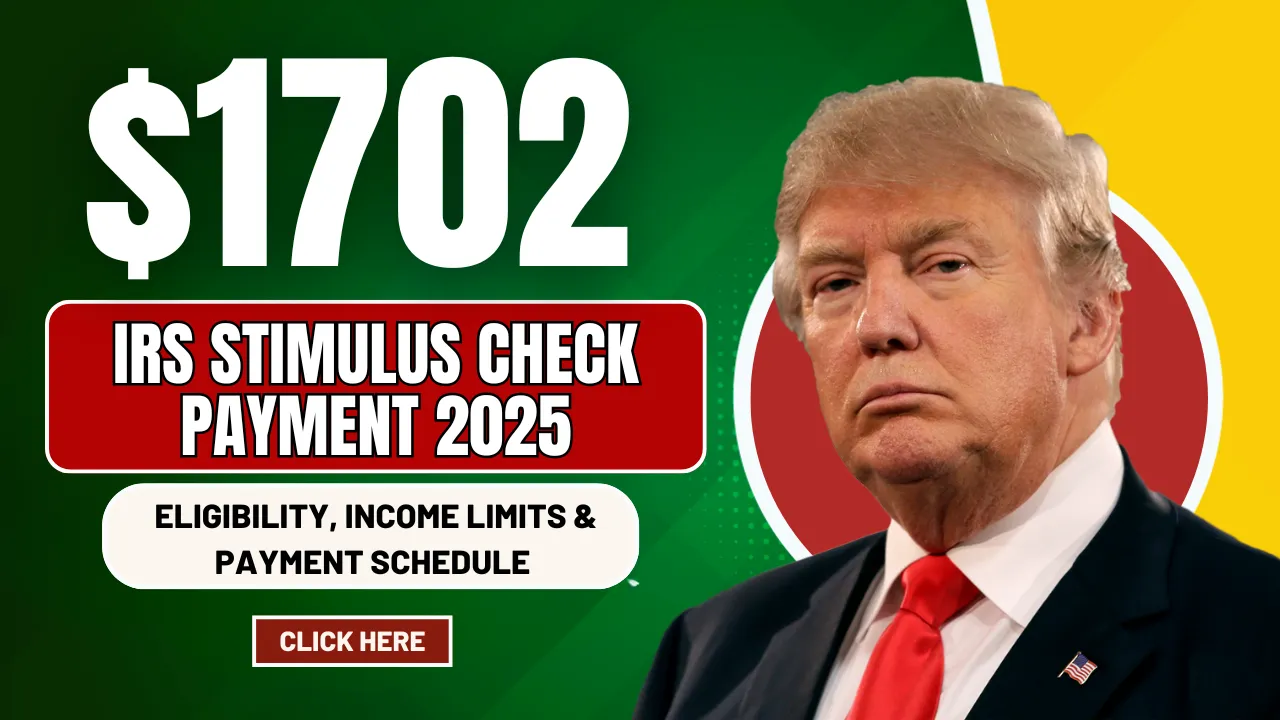$1700 Stimulus Payment June 2025, Check Your Eligibility Now
As prices continue to rise and the cost of living remains a challenge for many households, the government has approved a $1700 stimulus payment for eligible individuals in June 2025. This financial assistance is aimed at helping families and individuals cope with rising expenses and ensure they have the support needed to maintain basic living standards.
The news of this payment has sparked interest across the country. Many are now asking questions like, “Am I eligible?” and “When will I receive the money?” If you’re wondering the same, this article will break it all down for you in a clear and simple way.
What Is the $1700 Stimulus Payment?
The $1700 stimulus payment is part of a government relief program designed to support low to middle-income households in June 2025. It acts as a one-time cash payment directly deposited into your bank account or sent via paper check.
These types of stimulus payments became popular during the COVID-19 pandemic and have since been used to offer temporary financial relief to those who need it most, especially during times of economic stress.
Who Is Eligible for the June 2025 Payment?
Eligibility for the payment is mostly based on income level, filing status, and citizenship or residency status. Below is a breakdown of who can expect to receive the payment.
Eligibility Criteria:
-
Single taxpayers with income up to $75,000
-
Married couples filing jointly with combined income up to $150,000
-
Heads of households earning up to $112,500
-
Individuals receiving Social Security, SSDI, or VA benefits
-
Permanent residents and U.S. citizens
-
Must have filed 2024 taxes or registered through an online non-filer portal
-
Must not be claimed as a dependent on someone else’s tax return
Overview Table: Stimulus Payment Details
| Category | Details |
|---|---|
| Payment Amount | $1700 |
| Payment Date | Starting from June 15, 2025 |
| Eligible Individuals | Low and middle-income earners |
| Distribution Method | Direct deposit, paper check, or EIP card |
| Tax Requirement | 2024 tax return must be filed |
| Residency Status | U.S. citizens or eligible permanent residents |
| Benefit Programs Included | Social Security, SSDI, VA beneficiaries |
How Will the Payment Be Sent?
The payment will be distributed in three main ways, depending on your previous IRS information and preferences:
-
Direct Deposit:
This is the fastest method. If the IRS has your bank details, the money will be sent directly to your account. -
Paper Check:
If you don’t have a bank account on file, a check will be mailed to your registered address. -
EIP (Economic Impact Payment) Debit Card:
Some people may receive a prepaid debit card instead, especially those who previously received payments this way.
What If You Haven’t Filed Taxes?
If you haven’t filed your 2024 tax return, it is highly recommended to do so as soon as possible. Filing helps the government determine your income and eligibility. If you are not required to file taxes (like some seniors or low-income individuals), you can use a non-filer portal when available to register for the payment.
Possible Reasons for Delays
Not everyone will receive the payment at the same time. Here are some reasons why your payment might be delayed:
-
Incorrect bank details or mailing address
-
Tax return under review
-
Recent changes in filing status or income
-
Dependents claimed incorrectly
Double-checking your IRS account online can help clear up any confusion or alert you to errors.
Why This Payment Matters
Many families are struggling with rent, groceries, healthcare, and utility bills. The $1700 stimulus aims to:
-
Reduce financial pressure on working families
-
Support seniors and people with disabilities
-
Stimulate economic spending in local communities
While it’s not a long-term solution, the relief can make a big difference in meeting immediate needs.
What to Do After Receiving the Payment
If you qualify and receive the payment, here are a few smart ways to use it:
-
Pay off essential bills (electricity, water, rent)
-
Buy groceries and medication
-
Start or add to an emergency savings fund
-
Avoid unnecessary spending—this is meant for relief
If you don’t need the money right away, consider setting it aside for future unexpected costs.
Frequently Asked Questions (FAQs)
Q1: When will the $1700 payment be sent out?
The payment will begin to be sent starting June 15, 2025, and continue in batches over the following weeks.
Q2: Can I still get the payment if I didn’t file taxes?
Yes, in some cases. If you’re not required to file, you’ll need to register through a non-filer portal. If you are required to file but haven’t yet, do so as soon as possible.
Q3: Will this payment affect my other benefits?
No, the $1700 payment is not considered taxable income and does not affect Social Security, SNAP, Medicare, or housing benefits.
Q4: What should I do if I haven’t received my payment?
First, check your IRS online account or use the “Get My Payment” tool. If there’s still no update after a few weeks, you may need to contact the IRS directly.
Q5: Can I receive the payment if I live overseas?
Yes, as long as you are a U.S. citizen or eligible resident, and meet the income and filing requirements, you are still eligible even if you live abroad.
Final Words
The $1700 stimulus payment in June 2025 is a welcome move for millions of Americans. Whether you’re a worker dealing with inflation, a senior living on a fixed income, or a parent trying to manage your household budget, this payment can offer real relief.
It’s important to stay informed, act quickly if you need to file or register, and use the funds wisely. Make sure your bank details and address are updated with the IRS, and don’t miss out on this opportunity.
A little attention now could lead to $1700 in your pocket next month. So go ahead, check your eligibility — and get the help you deserve.




